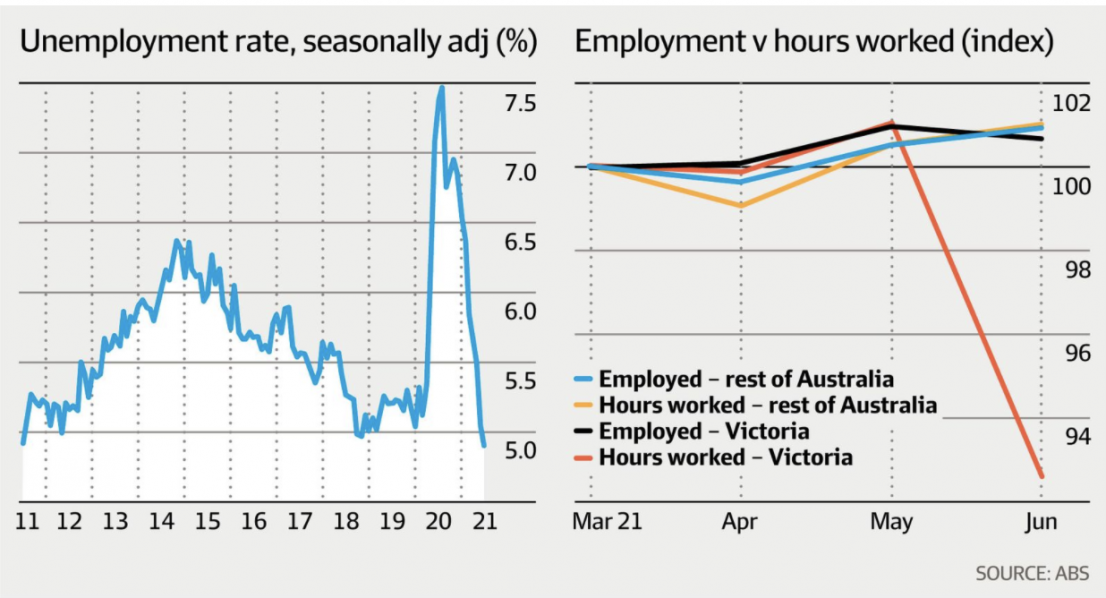
We’ve probably all worked with a colleague who doesn’t pull their weight. How do you bring an employee slacking off into line?
You look away from your laptop screen and your colleague is at it again: mindlessly scrolling through Facebook for the fifth time today before their mouse lands upon a clickable link titled: ‘Here’s how my dog knows when my alarm is about to go off’. Unless your colleague is undertaking a project in animal behaviourism, there’s a very slim chance the endearing dog footage is a genuine work task.
We all spend a few minutes here and there checking Facebook, chatting to a colleague about a gripping Netflix series we just finished binge-watching, or taking a quick personal call during work hours. But there’s a point at which a short and well-deserved break enters into ‘slacking off’ territory.
Sean Wilson, CEO of Better HR, says although even the best workers have times when they slack off, this point arrives when the problematic behaviour starts to follow a similar and predictable pattern.
Another telltale sign might be if a colleague is falling behind on tasks, or the quality of their work is being compromised.
Unsurprisingly, your colleague who is watching dog videos all day is probably the same one who’s not pulling their weight on the team project, or constantly missing deadlines.
So how can you approach a coworker who is slacking off, and tell them their work ethic isn’t up to scratch without jeopardising your relationship or causing conflict in the workplace?
Wilson and Dr Allan Cohen, distinguished emeritus professor in global leadership at Babson College, share their insights and top tips.
1. Identify slacking off behaviour
First things first. Before you jump the gun and assume your coworker’s underperformance is indicative of a poor work ethic, consider other underlying causes for their behaviour.
Wilson says maintaining effective communication will enable you to delineate between an employee who is slacking off versus someone who is unsure of what’s expected of them, struggling to stay on top of their workload or not equipped with the necessary skillset.
“If you have strong relationships, you’ll find that your employees will tell you what obstacles are preventing them from performing effectively,” says Wilson. “It’s easy to say that someone is slacking off, but it could be that they’re underperforming and not aware of what you want them to do.”
As many employees are currently juggling work responsibilities and homeschooling, it’s possible they’re preoccupied with other demands right now. In the current climate of uncertainty around COVID-19, various lockdowns, and burnout rates at a worryingly high level, many employees might not have the physical or mental space to give their all to work right now and that needs to be okay.
“Maybe they have three children to juggle at the moment, so it’s difficult for them to focus on their work,” says Wilson.
He gives the example of an employee who needs to set their children up at home for school at 9am, so they might not log onto their work computer at that time.
“But in reality, what you’re not aware of is that at six o’clock in the morning when their children are still asleep, that employee might be putting in the hours then to deliver the same result.”
They might also be underperforming because their home environment isn’t conducive to productivity.
“There could be an equipment issue. Maybe they don’t have a desk at home and they’re sharing the desk with their kids, so that’s causing a lot of noise which is creating productivity problems.
“If you have conversations with people, often you can uncover these kinds of problems and identify solutions to fix them before they become a formal performance management issue.”
2. Open a dialogue
If you’ve explored the possibilities above and still come to the conclusion that your coworker’s tendency to slack off is likely due to a poor work ethic, it might be time to tackle that issue head-on.
Wilson advises doing this before making a call about whether to escalate the problem to someone more senior.
“It’s possible that an employee is dealing with personal issues at home that have nothing to do with the workplace. Going to their manager escalates it from being a genuine issue of concern about trying to fix the problem to calling out somebody else’s behaviour.
“They might have other issues on their mind that are impacting their performance, but if you tell their manager straight away, they might become very conscious that everybody else in the workplace is now looking at them, and that they’re being singled out.
“It’s about making sure those conversations are handled appropriately, and people are given opportunities to respond privately.”
3. Work together
When approaching an employee who is slacking off, Wilson advises taking a calm and steady approach and avoiding confrontational language.
Instead, he proposes finding a solution together by asking questions such as: ‘Is there anything I can do to help? Is there something that’s preventing you from doing your job? Is there a problem in the team that is having an impact on you?’
A productive outcome will more likely ensue with a positive and forward-looking approach, says Wilson.
“It’s not about being critical and saying, ‘You’re not carrying your weight’. Help that person to save face by being positive in your communication. The minute you criticise people, they become immediately defensive, whereas if you come from a place of genuinely trying to help people, they’re more likely to be responsive.”
Cohen concurs with this sentiment and encourages employees to “get into a posture of inquiry and exploration, rather than attack and blame” before approaching a colleague.
“Remember to treat the first conversation or two as exploration and problem-solving. Point out one or more examples, or a pattern of the difficulty and its consequences, making sure that the person understands what the ramifications have been and are. Work to get into joint problem-solving: “let’s see what we might do to prevent future problems.”
Come to an agreement about a method for keeping track of progress, says Cohen, who advises considering questions such as: Does the person prefer close monitoring or only periodic checks? How would the person prefer to be managed if deadlines or timelines are not being met? Can you express discomfort with what is desired and look for other alternatives that are mutually satisfying?
Further strategies to create a positive and non-confrontational environment that encourages collaboration could include:
- Approach the conversation on neutral ground, such as in a small break-out area or at a coffee shop, and avoid a more confrontational set-up such as a formal board room that could lead the employee to feel worried or act defensively.
- Avoid using accusatory statements. “Talking about the impact on you and the work, the inconvenience or other negative consequences for you, and your concern about whether it is possible to help, is much more likely to reduce defensiveness than overt attacks, accusations, sarcasm, threats, and so on,” says Cohen.
- Avoid using ‘we’ statements, which could imply that you’ve been discussing the colleague’s behaviour with other people. For example, “We’ve all noticed that you spend a great deal of the morning doing non-work related tasks” might be interpreted as a group uniting against them, whereas, “I’ve observed that it takes you a number of hours to start on your work for the day” keeps the conversation strictly between you and the other person.
Take responsibility
If the employee slacking off is in your immediate team, you likely won’t have to think very deeply about how their lack of commitment is impacting your workload.
Most probably, their idleness is going to mean there’s more work piling onto your plate. Or, if you’re working on a project together and they aren’t meeting deadlines, that will probably have a negative flow-on effect to the rest of the team.
In this situation, it’s advisable to speak up sooner rather than later, in order to keep your own workload at a manageable level and stave off burnout.
But what if they’re not in your team? Then it’s not so clear cut. For instance, what if you have minimal day-to-day interaction with the underperforming employee? The fact that they check Facebook an unreasonable number of times per day might grate on you, but if you work in separate teams, have different bosses, and produce separate work, what does their slacking off have to do with you?
Probably not a whole lot.
As a general rule, Cohen advises against approaching a colleague slacking off who isn’t in your team.
The reason to avoid doing so, he says, is because organisational norms often frown on people who butt into the dynamics of teams outside their own.
“If you are skilled at raising issues and can talk with the person privately in circumstances that are not too rushed, a direct approach can be helpful,” he says. “But it has to be made in terms of explaining the impact of the work not done, a spirit of inquiry about what problems are getting in the way rather than blame, and a willingness to acknowledge that you or your team may be causing some of the problem.”
But even if an employee slacking off doesn’t directly impact your ability to do your job tasks, Wilson says it’s in everyone’s best interests to hold an employee slacking off to account.
“Putting your head in the sand and not saying when you see a problem happening feeds into the business’ potential to fail, and your job may ultimately fail.
“We all have a responsibility to help a business succeed. That’s what helps them employ people, get pay rises, and achieve success.”










